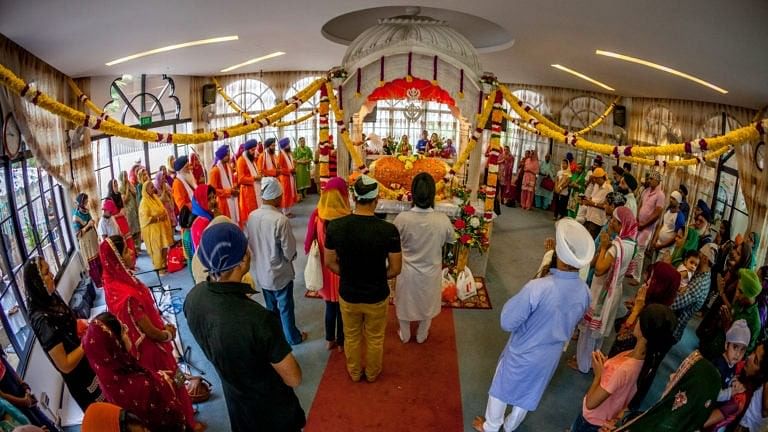
Gurdwara Silat Road
Credit: sikhs.org.sg
Singapore: A Gurdwara is celebrating its centenary by recapping the arrivals of early Sikhs from Punjab in the 1800s including a revolutionary who fought for India’s independence from the British Raj but was jailed in the then colonial-ruled island.
One of the two murals at the Gurdwara entrance is a homage to the revered saint Bhai Maharaj Singh, who was the first documented Sikh to arrive in Singapore as a British prisoner in 1850, reported The Straits Times.
The other mural pays tribute to the Sikhs who served in the police force during Singapore’s early years.
The murals were unveiled and signed by President Tharman Shanmugaratnam on July 6, during the official launch of centennial celebrations.
Located off Jalan Bukit Merah opposite the sprawling grounds of the Singapore General Hospital, the Gurdwara is marking its centenary with activities that began on June 15 and will last until December, with Singapore National Day being one of the highlight events.
The Gurdwara was founded by the first wave of Sikh immigrants brought to Singapore by the British in the 1800s and later gave shelter to families of Sikh soldiers killed in battle during WWII.
On Friday, devotees turned out in force at the Silat Road Sikh Temple, decked out in festive fabrics of deep red, pink and pale blue for the city-state’s 59th birthday.
Declared a historical site by the National Heritage Board in 1999, the temple held three back-to-back prayer and worship sessions - the Sukhmani Sahib and Shabad Kirtan.
The Gurdwara serves langar (meals) for about 1,000 devotees daily and 2,000 over the weekend. Prayers and langar preparation is done by Singaporean Sikhs and migrant workers for the Gurdwara, which is open to people of all faiths.
The Gurdwara, one of the seven Sikh temples in Singapore, was completed in 1924.
As is practised at Gurdwaras for ‘Sikh Sevadars’ volunteering to work and offer free service, seva at the Gurdwaras here is done mostly by the Sevadars out of the 12,000 Sikhs in Singapore.
Seva is selfless community service, a key tenet of Sikhism.
Only trained Gianis, Kirtan singers (ragis) and cooks are employed from India to prepare langar.
“This temple has our history and we do some seva whenever we can, like cooking and cleaning,” the Singapore Daily quoted 40-year-old Nirmal Singh as saying.